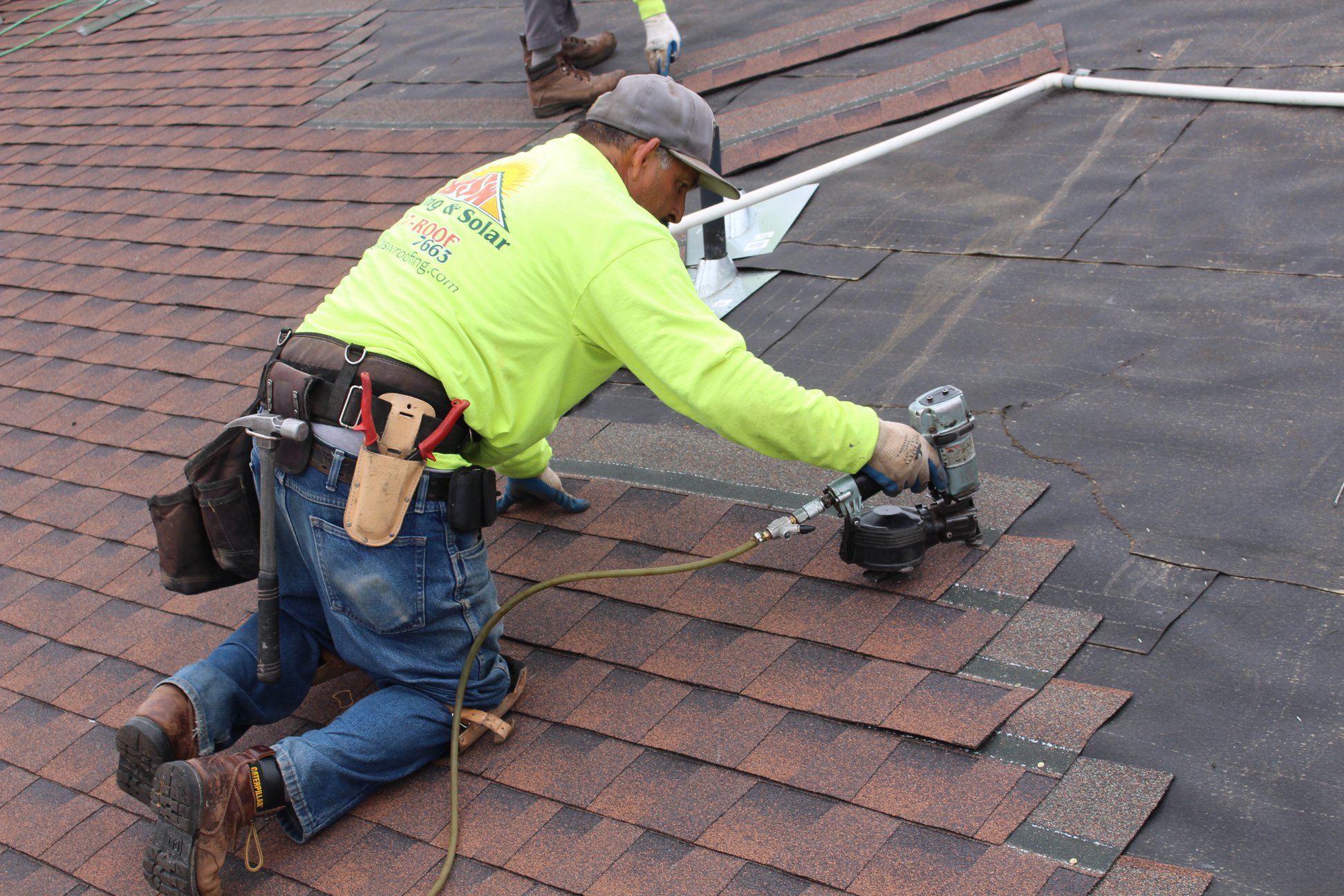A Comprehensive Look at Roofing Companies Gainesville Homeowners Recommend
Wiki Article
Finest Practices for Ensuring Correct Roof Covering Air Flow
Making certain correct roof ventilation is crucial for the longevity and effectiveness of a roof system. A well balanced consumption and exhaust air vent ratio, typically 1:300, plays an essential duty, with intake vents preferably positioned at the reduced edge of the roofing for great air access and exhaust vents at the top for warm air exit. Normal inspections to identify obstructions and maintain clear air flow are paramount. Keeping insulation away from vents is essential to protect against air movement limitation. Recognizing these fundamental elements establishes the stage for even more thorough understandings right into installment and upkeep methods that can dramatically improve your roof system's performance.Understand Air Flow Essentials
Appropriately recognizing ventilation basics is necessary for making sure the long life and effectiveness of roof. Effective air flow minimizes dampness accumulation and temperature extremes in the attic, both of which can cause substantial architectural damages with time. A well-ventilated roof covering aids in stopping common issues such as mold growth, wood rot, and ice dams, which can compromise the stability of the roof covering materials and the underlying structures.The main goal of ventilation is to facilitate the activity of air, permitting a constant exchange in between the outside and indoor settings. This equilibrium is achieved via a combination of consumption and exhaust vents that function with each other to keep ideal airflow. Consumption vents, typically situated along the eaves or soffits, permit fresh air to enter the attic area, while exhaust vents, frequently situated at or near the roofing ridge, enable warm, moist air to escape.
Secret factors influencing the effectiveness of roof covering ventilation consist of proper placement, ample sizing, and ensuring that both intake and exhaust vents are unobstructed. Routine assessment and maintenance are crucial to identify potential clogs, damage, or ineffectiveness in the air flow system, thereby safeguarding the roofing system's efficiency and resilience.
Kinds Of Roofing System Vents
Roof vents play an important function in keeping effective attic room air flow and, by expansion, the overall health and wellness of the roof. Different kinds of roof covering vents are available, each with one-of-a-kind advantages customized to specific roofing requirements. Ridge vents, for example, are set up along the roofing system's height, allowing cozy, damp air to get away from the attic. They provide continual air flow and mix effortlessly with the roofline, making them both effective and visually pleasing.
Soffit vents are installed under the eaves and job in tandem with roofing system vents to guarantee a well balanced intake and exhaust system. By allowing cooler air to get in from below, soffit vents assist in the expulsion of hot air through top vents. Gable vents, located on the outside wall surfaces of the attic room, offer another reliable service, specifically in homes with saddleback roofs.
Examine Your Existing Ventilation

Next, think about the age and condition of your roof covering products and ventilation elements. Older systems may not conform with present building regulations or might have weakened gradually, decreasing their performance. Conduct a complete examination to determine any signs of deterioration, such as rust, damages, or voids that could jeopardize the system's performance.
Additionally, gauge the attic temperature level and moisture levels. High temperature levels and humidity can show insufficient ventilation.
Setup Best Practices
Efficient installment of roof air flow systems is paramount for making sure optimal performance and durability. Correct installment starts with understanding the specific air flow demands of the roof and the building it covers. This involves determining the right proportion of consumption to tire vents, commonly adhering to the 1:300 guideline, which stipulates one square foot of ventilation for every single 300 square feet of attic room floor area.
The positioning of vents is just as essential. Intake vents should be installed at the roofing system's lower side, often in the soffits, to permit amazing air to enter. Exhaust vents, on the various other hand, need to be mounted near or at wikipedia reference the roofing's peak to help with the exit of warm, wet air. This produces a natural airflow that assists maintain temperature level and wetness balance within the attic room room.
Seal all air vent connections thoroughly to avoid air leaks and potential water seepage. Use premium materials and follow manufacturer guidelines to guarantee durability and efficiency. In addition, incorporating ridge vents with baffles can substantially improve airflow effectiveness by preventing wind-driven rainfall and snow from going into the attic.
Eventually, specific installation of roof ventilation systems alleviates prospective concerns such as mold development, ice dams, and structural damages, guaranteeing the roofing system's stability and the building's overall wellness.
Routine Maintenance Tips
Consistency in maintenance practices is essential to guaranteeing the lasting efficiency of roof ventilation systems. Throughout these assessments, make sure that vents are totally free of debris, nests, and various other obstructions that could hinder air flow.
Cleansing the vents is an additional vital task. Make use of a soft brush or a vacuum cleaner to eliminate dust and debris from consumption and exhaust vents. Be mindful not to damage the vent displays or louvers throughout the process. In addition, evaluate the attic space for any kind of indicators of water damage, which might jeopardize the integrity of the roof.
Appropriate insulation is just as crucial. Guarantee that attic room insulation does not obstruct the vents, as this can drastically restrict airflow. If any kind of insulation has changed or cleared up, reposition or change it to keep a reliable obstacle.
Last but not least, change any kind of damaged or missing out on elements immediately. Broken vents, fractured shingles, or scrubby flashing can all add to inadequate air flow and ought to be dealt with immediately. Regular maintenance ensures that the roof ventilation system works efficiently, thus prolonging the life expectancy of the roof covering itself.
Conclusion
Making certain correct roof covering air flow is critical try here for maintaining the efficiency and toughness of a roof covering system. Adherence to the 1:300 intake and exhaust vent ratio, combined with the critical positioning of vents, is crucial.A balanced intake and exhaust air vent proportion, generally 1:300, plays an essential role, with intake vents preferably placed at the reduced side of the roofing for great air access and exhaust vents at the peak for cozy air leave. Consumption vents, commonly located along the eaves or soffits, allow fresh air to enter the attic room room, while exhaust vents, usually situated at or near the roof ridge, make it possible for hot, moist air to get away.
Soffit vents are mounted under the eaves and work in tandem with roof covering vents to guarantee a balanced intake and exhaust system. By permitting cooler air to get in from below, soffit vents promote the expulsion click to investigate of warm air with upper vents. Adherence to the 1:300 consumption and exhaust vent ratio, paired with the tactical positioning of vents, is necessary.
Report this wiki page